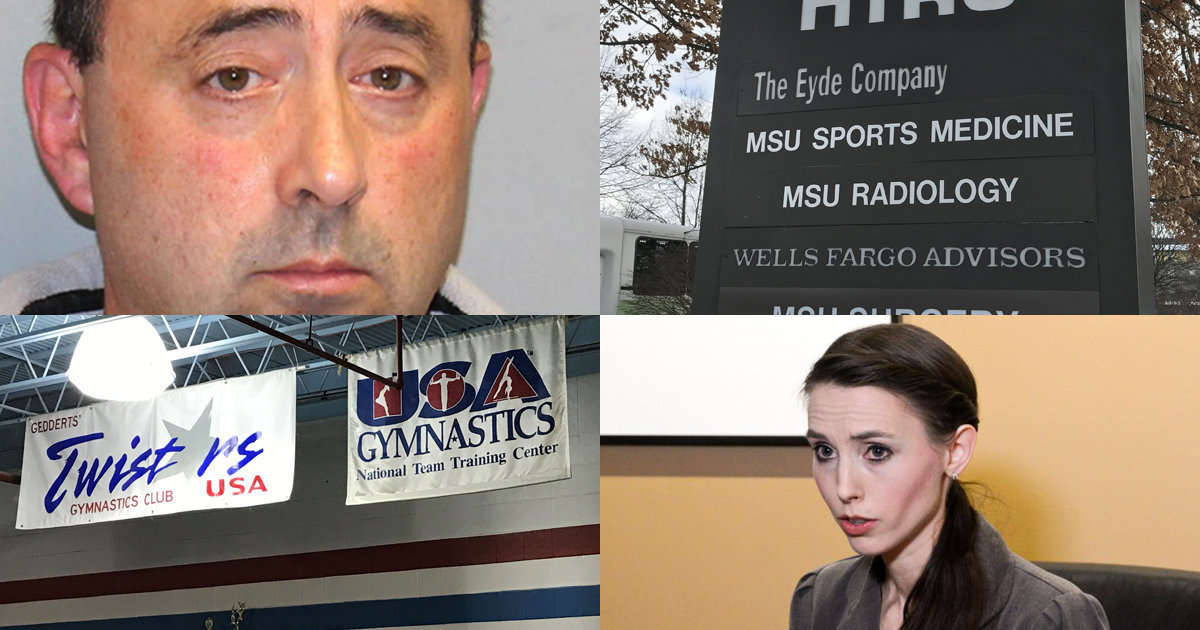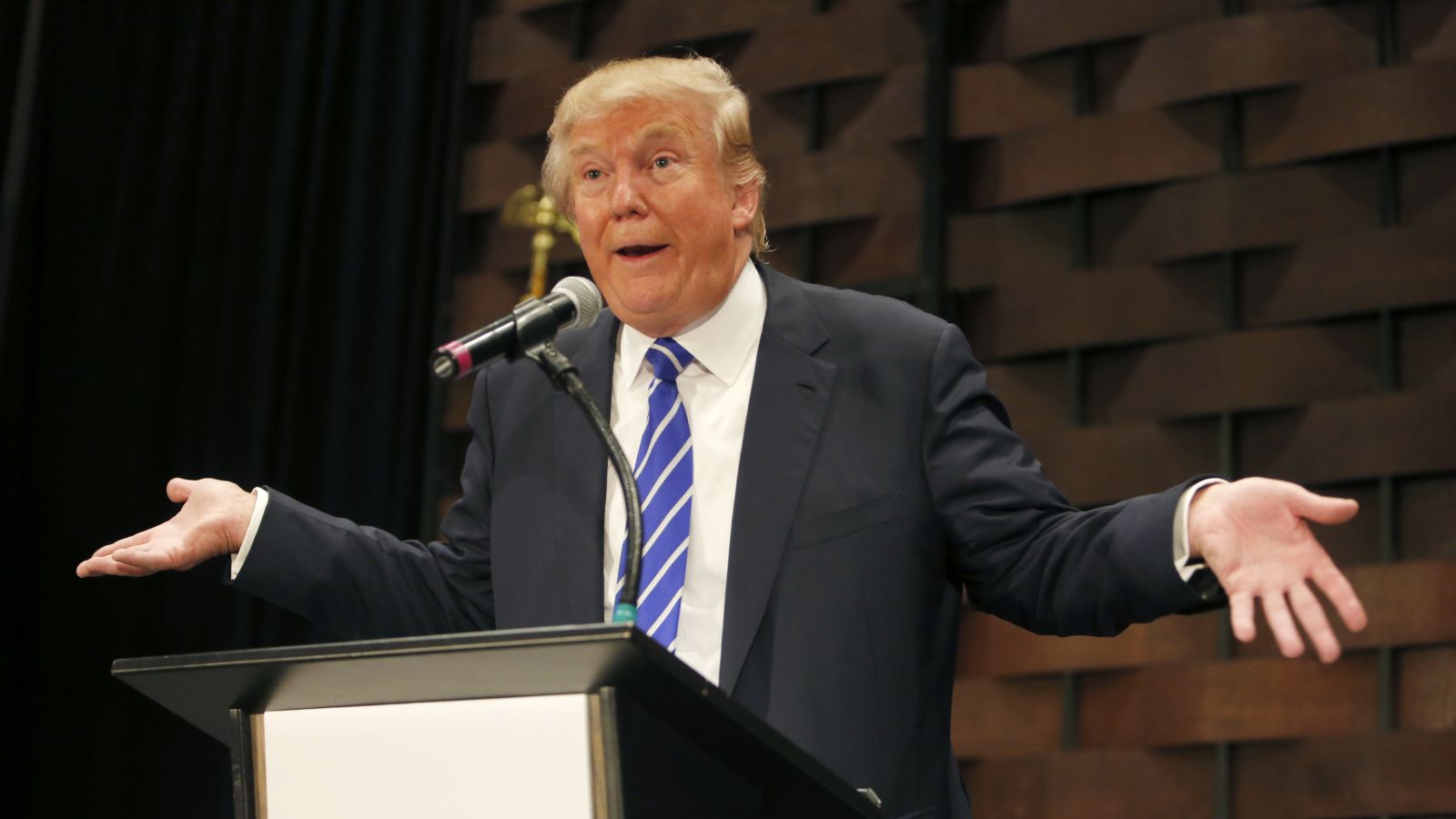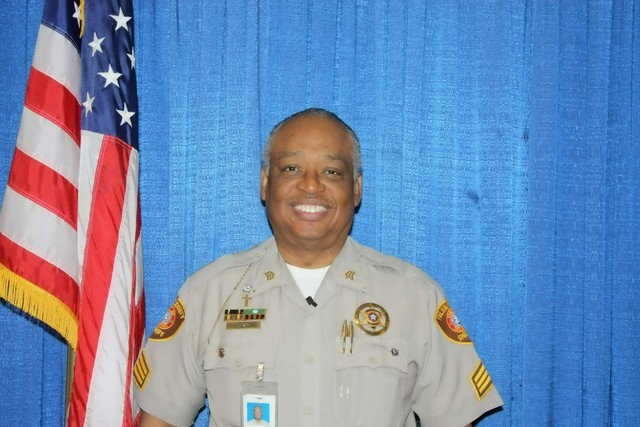
By the numbers, the Dr. Larry Nassar case is worse than the Jerry Sandusky and Bill Cosby stories — put together.
Last month, Larry Nassar, a longtime doctor for USA Gymnastics and Michigan State University, was charged with sexually assaulting dozens of girls and women he has treated over the past 20 years.
The girls and women in the case, most of them current and former competitive gymnasts, accuse him of using his medical practice to sexually assault them, digitally penetrating them without gloves or lubricant and fondling their breasts and buttocks — often while visibly aroused. Some of the girls were as young as 9 years old when the alleged abuse began, and at least one claimant, a parent, reported that her daughter was assaulted while she, her mother, was in the room.
There are still accusers coming forward.
Of course, Nassar isn’t the first beloved and much revered sports figure to have intimate access to young people and take advantage of them. Penn State assistant football coach Jerry Sandusky spent years sexually abusing boys in a charitable program.
But where the Sandusky case and Nassar case differ are the numbers. Sandusky was accused of assaulting 30 boys. Nassar is accused of sexually assaulting more than 100 girls and women.
In the gymnastics world, among fans and athletes, the Nassar story is the story. “In the community it’s everywhere you look,” said Lauren Hopkins, who runs the gymnastics siteThe Gymternet, in an interview with The Huffington Post. The popular gymnastics podcastGymcastic has covered the story extensively; four of the last five episodes have been about sexual abuse in the sport.
Yet the story has barely broken through from the gym world into mainstream sports coverage, let alone prime-time news. The Indy Star and some Michigan papers have beendoggedly covering developments in the case. The Wall Street Journal has run several stories, and 60 Minutes did an interview with several accusers. The New York Times ran a single column the day after the hearing and two op-ed pieces, but otherwise the case has garnered relatively little national coverage when compared with similar stories. If Sandusky and Bill Cosby are anything to go by, this story should be in everyone’s news feed and on everyone’s mind. But it isn’t. Why not?
Gymnastics is not football. Devoted though gymnastics fans are, they are far fewer in number than football fans, and no sport in America compares to football’s monetary value. The NFL is a $7 billion-a-year industry, and football is a fixture of Sunday afternoons ― and Friday nights, and Saturday afternoons and some Monday nights. Also some Thursdays.
M.E. Karns, a senior lecturer in the Department of Social Statistics at Cornell University and an advocate for survivors of sexual violence, agrees, saying in an interview with HuffPost that, with wildly popular sports like football and basketball, “there’s a ridiculous amount of identification with these sports.” She added that there isn’t the same widespread devotion to gymnastics.
Football is also synonymous with America in a way gymnastics is not. Football is culturally dominant. The result is that allegations made against football players and coaches ― Sandusky, for instance ― are far more likely to grab the attention of sports journalists and fans than are stories about gymnastics.
The demographics of sports journalism plays a role, too. A recent report by the Women’s Media Center found that 89 percent of sports reporters are men, and women make upfewer than 10 percent of assistant sports editors.
“Sports media is the malest and palest of them all,” said sports journalist Jessica Luther in an interview with HuffPost.
Luther, the author of Unsportsmanlike Conduct, a book about sexual assault and college football, says that the Sandusky case may have garnered more attention because the victims were boys, and the male editors and reporters might have more empathy for the victims. They can see themselves as someone who could be abused, she said. “Most [sports journalists] won’t see themselves that way with gymnastics.”
Hopkins, the editor of Gymternet, says that even gymnastics journalists have been leery of asking too many questions of USA Gymnastics, coaches and gymnasts. At a national meet in March, Hopkins says, no one asked any of the coaches questions about the case.
“Mainstream media people,” she said, have been “bizarrely quiet, shuffling around the issue.” She said she believes that journalists fear losing access to coaches and athletes.
Luther also argues that the uproar over what Sandusky did to dozens of boys was not actually about Sandusky, and it wasn’t actually about those boys. “I don’t really know that people cared about the boys as much as they cared about the institution of Penn State football and Joe Paterno,” she said, referring to the longtime head coach who was fired amid the scandal.
“Part of what fueled that case was everyone’s idea of Paterno,” she said. “They felt like they knew him, and people had already decided that he was a very good man. Did people care about Sandusky? I don’t know, outside of his relationship to Paterno.”
Luther’s experience of covering rape allegations against college football players, she said, has taught her that when the athlete is in a high-profile program, media coverage and public engagement are far more likely.
“There were football people rioting because they were so upset that [Paterno] got fired,” she said. Luther argued that those protests had nothing to do with Sandusky or the victims. Rather, it was about the fear of what would happen to a beloved institution fans had supported for decades.
Rebecca O’Connor, vice president for public policy at the Rape, Abuse and Incest National Network (RAINN), says that she’s not surprised by the lack of widespread attention to the Nassar case. The institution of Penn State football and the celebrity of Bill Cosby provided the spotlight necessary to make those cases front-page news.
“Sometimes it does take a level of notoriety and heightened awareness to really turn people’s heads.”
Need help? Visit RAINN’s National Sexual Assault Online Hotline or the National Sexual Violence Resource Center’s website.










